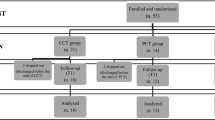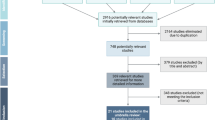Abstract
Background and aims: Diagnosis of dementia is often difficult in subjects with low educational level. Our aim was to evaluate the role of functional performance and the possibility of preferring scores of activities of daily living (ADL) and instrumental activities of daily living (IADL) in screening elderly people for diagnosis of dementia in a rural population of Southern Italy with a very high percentage of non-educated subjects. Methods: a random sample of 300 residents, out of 1089 subjects over 60 years of age living in San Marcellino (Caserta, Campania), received door-to-door visit for information about their medical history, with clinical evaluation of general geriatric conditions, including the cumulative illness rating scale (CIRS). Dementia was diagnosed if subjects had a Clinical Dementia Rating score (CDR) ≥ 1 and according to the criteria of DSM-IV, but not according to scores on the Mini Mental State Examination (MMSE), ADL and IADL. Two hundred and nineteen normal subjects (NS) and 75 patients with dementia (DP) were evaluated. Results: in NS, their mean age- and education-corrected MMSE score was 22.15 (lower than the normal cut-off value of 23.8) and 12.60 in DP (p<0.0001). In NS, the mean ADL score was higher than in DP (5.53 vs 2.64, p<0.0001; only age was correlated with ADL scores (coeff=− 0.44, t=− 4.557, p<0.0001). Assuming age as covariate, ADL scores highly differentiated DP from NS (F(1, 289)=26.083, p<0.0001). In both sexes, mean IADL scores were higher in NS than in DP (4.46 vs 1.80 in men, p<0.0001); 6.85 vs 2.31 in women, p<0.0001. Age and education did not influence IADL scores in men, but age greatly affected performance in women. IADL scores clearly differentiated NS from DP. In NS, a positive correlation was evident between ADL and IADL scores (r=0.234, p<0.0005, but neither scores correlated with the MMSE scores, even when correlation was performed separately for men and women. In DP, a strong correlation was observed between ADL and IADL scores (r=0.709, p<0.0001 and significant correlations were also evident between the scores of MMSE and both ADL (r=0.492,p<0.0001) and IADL (r=0.398, p<0.0004). Conclusions: in a rural community with a high prevalence of non-educated subjects, cognitive impairment is related to education, whereas independent functioning is limited mainly to age and not to cognition, if the latter remains (relatively) unimpaired. These results point to the importance of an “ecological” approach to the evaluation of elderly people, particularly those living in small rural communities, where education and the social environment may give rise to difficulties in diagnosis of dementia. The assessment of functional autonomy by ADL and IADL scales may be a better screening tool in diagnosing dementia than the MMSE scores.
Similar content being viewed by others
References
Lobo A, Launer LJ, Fratiglioni L, et al. Prevalence of dementia and major subtypes in Europe: a collaborative study of population-based cohorts. Neurologic Diseases in the Elderly Research Group. Neurology 2000; 54: S4–9.
Di Carlo A, Baldareschi M, Amaducci L, et al. Cognitive impairment without dementia in older people: prevalence, risk factors, impact on disability. The Italian Longitudinal Study on Aging. J Am Geriatr Soc 2000; 48: 775–82.
Ravaglia G, Forti P, De Ronchi D, et al. Prevalence and severity of dementia among northern Italian centenarians. Neurology 1999; 53: 416–8.
Ravaglia G, Forti P, Maioli F, et al. Education, occupation, and prevalence of dementia: findings from the Conselice Study. Dement Geriatr Cogn Disord 2002; 14: 90–100.
Rocca WA, Bonaiuto S, Lippi A, et al. Prevalence of clinically diagnosed prevalence of Alzheimer’s disease and other dementia disorders: A door-to-door survey in Appignano, Macerata province, Italy. Neurology 1990; 40: 626–31.
Benedetti MD, Salviati A, Filipponi S, et al. Prevalence of dementia and of apolipoprotein E genotype distribution in the elderly of Buttapietra, Verona province, Italy. Neuroepidemiology 2002; 21: 74–80.
Cristina S, Nicolosi A, Hoaser WA, Leite ML, Gerosa E, Nappi G. The prevalence of dementia and cognitive deficit in a rural population of 2,442 residents in Northern Italy: A door-to-door survey. Eur J Neurol 2001; 8: 595–600.
Azzimondi G, D’Alessandro R, Pandolfo G, Feruglio FS. Comparative study of the prevalence of dementia in two Sicilian communities with different psychosocial background. Neuroepidemiology 1998; 17: 199–209.
Prencipe M, Casini AR, Ferretti C, Lattazio MT, Fiorelli M, Culasso F. Prevalence of dementia in an elderly rural population: Effects of age, sex, and education. J Neurol Neurosurg Psychiatry 1996; 60: 628–33.
Ferini-Strambi L, Marcone A, Garacini P, et al. Dementing disorders in north Italy: prevalence study in Vescovato, Cremona province. Eur J Epidemiol 1997; 13: 201–4.
D’Alessandro R, Pandolfo G, Azzimondi G, Feruglio FS. Prevalence of dementia among elderly people in Troina, Sicily. Eur J Epidemiol 1996; 12: 595–9.
De Ronchi D, Berardi D, Menchetti M, et al. Occurrence of cognitive impairment and dementia after the age of 60: a population-based study from Northern Italy. Dementia and Geriatr Cogn Disord 2005; 19: 97–105.
Tognoni G, Ceravolo R, Nucciarone B, et al. From mild cognitive impairment to dementia: a prevalence study in a district of Tuscany, Italy. Acta Neurol Scand 2005; 112: 65–71.
Grossi D, Camera G, Calise C. Evaluation of the influence of illiteracy on neuropsychological performances by elderly persons. Perspect Mot Skills 1993; 77: 859–6.
Milan G, lavarone A, Vargas NF, et al. Effect of demographic and environmental variables on cognitive performance in a rural community sample of elderly people living in Southern ltaly. Aging Clin Exp Res 2004; 16: 398–402.
Folstein MF, Folstein SE, McHugh PR. “Mini Mental State”: a practical method for grading the cognitive status of patients for the clinician. J. Psychiatry Res 1975; 12: 189–98.
Katz S, Ford AB, Moskowitz RW, Jackson BA, Jaffe MW. Studies of illness in the aged. The index of ADL: a standardized measure of biological and psychological function. JAMA 1963; 185: 914–9.
Lawton MP, Brody EM. Assessment of older people: self maintaining and instrumental activities of daily living. Gerontologist 1969; 9: 179–86.
Conwell Y, Forbes NT, Cox C, Caine ED. Validation of measures of physical illness burden at autopsy: the Cumulative lllness Rating Scale. J Am Geriatr Soc 1993; 41: 38–41.
Morris JC, Ernesto C, Schafer K and the ACDS investigators. Clinical Dementia Rating training and reliability in a multicenter study: the Alzheimer’s Diseases Cooperative Study Experience. Neurology 1997; 48: 1508–10.
Diagnostic and Statistical Manual of Mental Disorders — Fourth Edition (DSM-IV), American Psychiatric Association, Washington, DC, 1994.
Measso G, Cavarzeran F, Zappalà G, et al. The Mini-Mental State Examination: normative study of an ltalian random sample. Dev Neuropsychol 1993; 9: 77–85.
Magni E, Binetti G, Bianchetti A, Rozzini R, Trabucchi M. Mini-Mental State Examination: a normative study in an ltalian elderly population. Eur J Neurol 1996; 3: 1–5.
Beydoun MA, Popkin BM. The impact of socio-economic factors on functional status decline among community-dwelling older adults in China. Soc Sci Med 2005; 60: 2045–57.
Author information
Authors and Affiliations
Corresponding author
Rights and permissions
About this article
Cite this article
Iavarone, A., Milan, G., Vargas, G. et al. Role of functional performance in diagnosis of dementia in elderly people with low educational level living in Southern Italy. Aging Clin Exp Res 19, 104–109 (2007). https://doi.org/10.1007/BF03324675
Received:
Accepted:
Published:
Issue Date:
DOI: https://doi.org/10.1007/BF03324675




